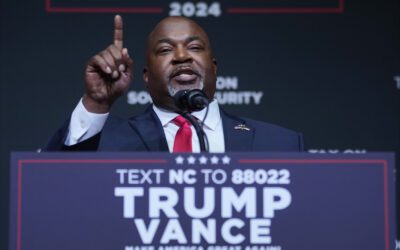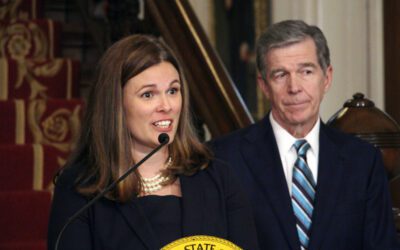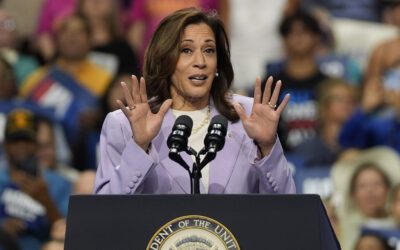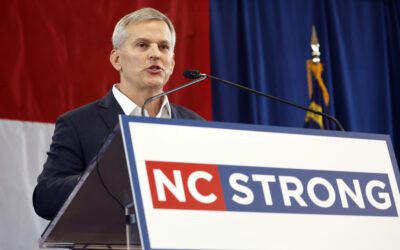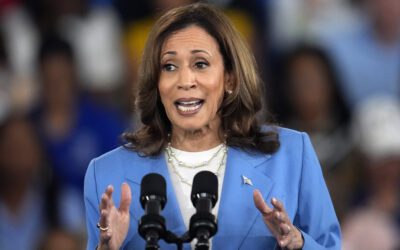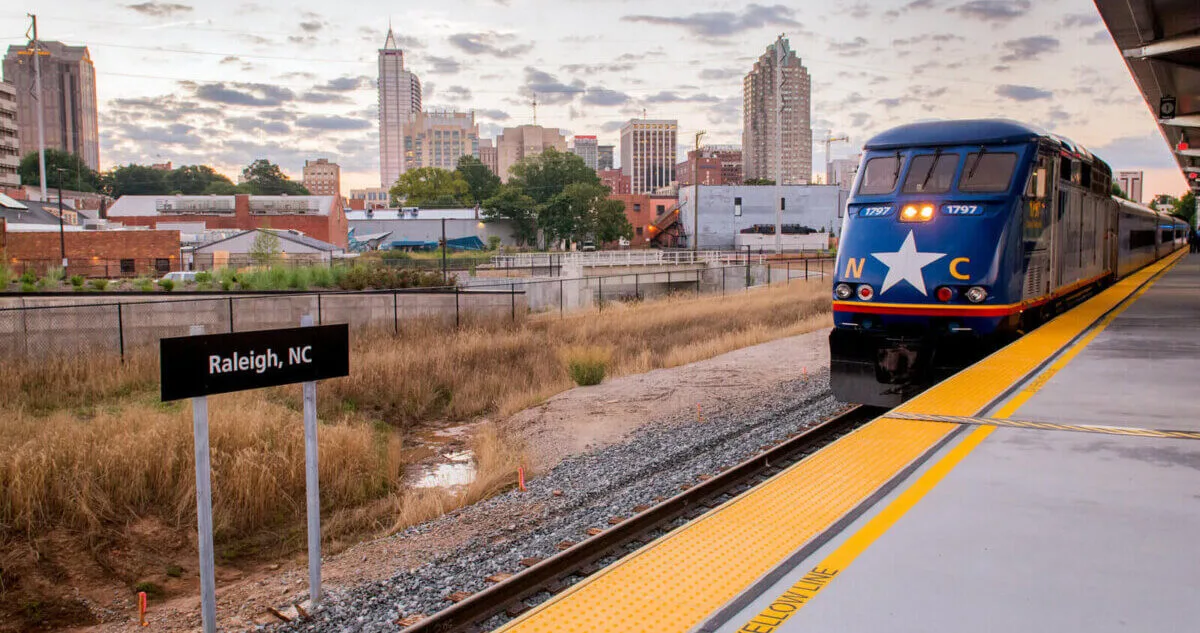
Image via NCDOTcommunications/Flickr
President Biden’s infrastructure law invested $58 million in the Raleigh-to-Richmond rail, a project that will benefit workers, the community, and the environment.
It’s no secret that the Triangle region is growing rapidly. But our current transportation and housing infrastructure is decades behind in being able to support such a population and future employment opportunities. To account for this rising growth and offset impacts – like increased housing costs, traffic, and air pollution – we need to dramatically expand our public transportation system.
As the vice chair of the Raleigh Transit Authority, I see how critical our existing public transit is for residents and the need to improve connectivity and reliability. After a bus driver shortage, we had to reduce the frequency from every 15 minutes to 30 minutes or 30 minutes to an hour. And despite this drastic change in convenience, our ridership numbers did not change. This shows people need this service—they have no other choice. So although the buses are free, I say our riders are paying a fare in lost time.
Without adequate public transportation options, newcomers to the region will inevitably add more cars to the road and hasten suburban sprawl. The addition of more cars on the road increases traffic congestion and local air pollution.
Because of the Biden administration’s infrastructure investments, the Triangle region can answer these challenges with the Raleigh-to-Richmond Rail, or the S-Line project. This project will connect our region to Virginia and eventually Washington, D.C., and potentially extend to Atlanta, Georgia. This federal funding has jumpstarted a necessary transit network that is many decades behind.
As I see it, there are two pictures that illustrate the benefit of this project. One is of the person that cannot afford a car and is dependent on our public transit system. With the addition of high-performance regional rail, this person has access to higher-paying employment opportunities. It gives them a choice between a job that pays $10 an hour or $15 an hour. While it may not seem like much, this creates the foundation for economic mobility. With rapid transit, they can get home by dinner time, whereas now the only way they could access that higher paying job is through sacrificing hours commuting on a bus.
The other picture is that of the potential benefits of connecting to major financial hubs like Richmond and Washington D.C. The Triangle is home to large tech and biotech companies, but the available venture capital funding is capped. The $50 million that really takes companies to the next level is not as accessible. But after connecting the Triangle to bigger business hubs like Richmond or D.C., companies based here have more opportunities for growth and fundraising. The faster and more efficiently we can do business, the more jobs are created.
The S-Line project recognizes rapid current and future population growth in our region. Not only would we get substantial connectivity, but there are also more opportunities for transit-oriented development along the rail corridor. These mixed-use communities near transit add more density, provide affordable housing, and really create an area where we balance rising home prices and the need for growth. This way we can avert rising costs of living while encouraging sustainable growth.
Finally, the S-Line advances our goals of decreasing emissions and improving air quality. The Final Environmental Impact Statement highlights how adding freight rail produces lower emissions than long haul trucks. While emissions can vary, a 2016 study found that overall carbon dioxide and carbon monoxide emissions declined by 44-94% by having a passenger take a train between Raleigh to Charlotte instead of an automobile. This sort of reduction is crucial to bringing North Carolina into a more energy-efficient and environmentally sustainable future while making the air we breathe a bit cleaner.
With the ultimate goal of the project is the incremental development, implementation, and operation of high-performance rail passenger services over the larger corridor from Washington, D.C. to Charlotte, it may be at least a decade until we can step onto a train in Raleigh. But the $58 million award from President Joe Biden’s Infrastructure law has catapulted this project from idea to our future reality. Without the investment, the S-Line project would remain shelved indefinitely as the Triangle grows and our aging infrastructure crumbles beneath its weight.

Op-Ed: Studying the Holocaust remains vital to ensuring it never happens again
International Holocaust Day will be observed on January 27, 2024. This day commemorates the liberation of the Auschwitz concentration camp by the...

VIDEO: How Rural Broadband Is Coming to This North Carolina County
More than 1.1 million North Carolinians lack access to high-speed internet, a necessity of the modern economy. In Warren County, help is on the way,...

VIDEO: Sampson County puts Biden’s promise to boost rural infrastructure to the test
Locals in this rural NC county say their water and air is polluted by a PFAS-contaminated landfill, massive hog and poultry farms, and industrial...

VIDEO: Sampson County puts Biden’s promise to boost rural infrastructure to the test
Locals in this rural NC county say their water and air is polluted by a PFAS-contaminated landfill, massive hog and poultry farms, and industrial...

Mold and classes in trailers: Inadequate funding for schools is hurting NC communities
Schools across the state are dealing with dilapidated classrooms and buildings in need of significant repair or a total rebuild due to a lack of...


